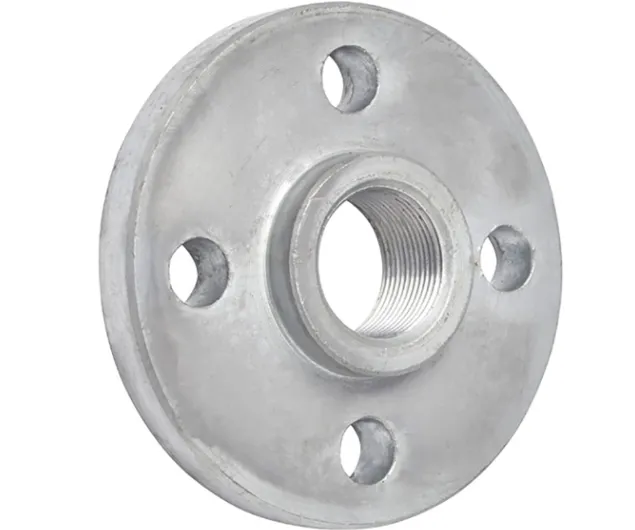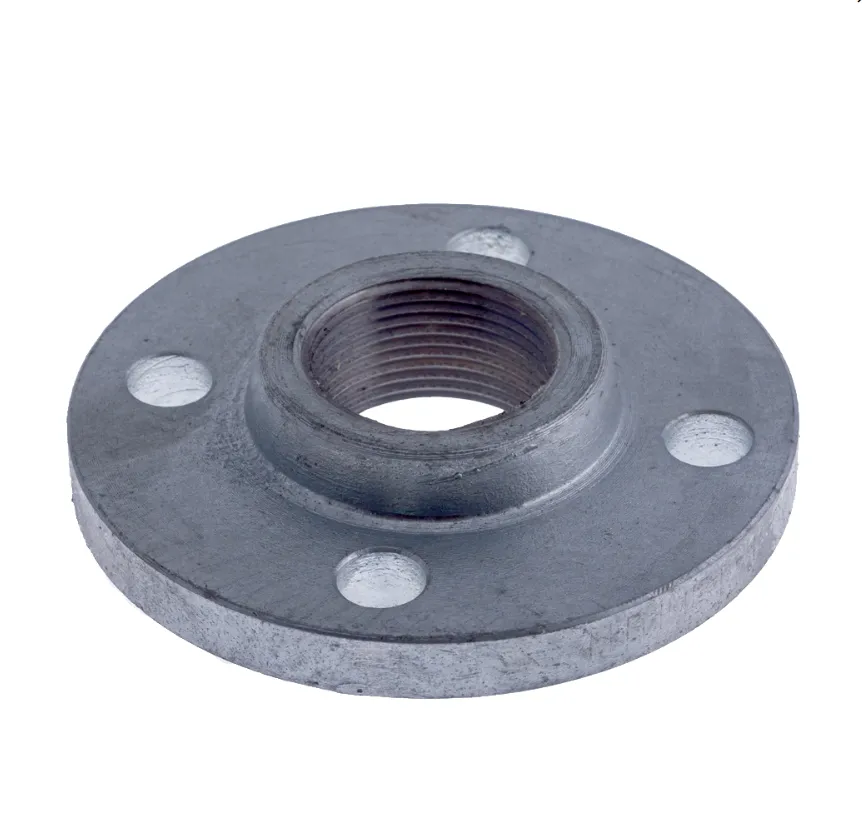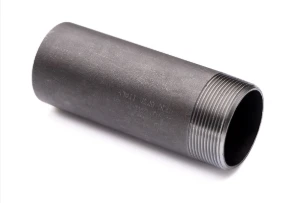Standard Overview
EN 1092-1 is a European standard concerning flanges and flange connections. It specifies requirements for flange dimensions, shapes, surface treatments, pressure ratings, and flange types. This standard ensures the quality and performance of flanges, enabling them to meet the needs of various applications.
Structural Characteristics
Threaded Connection: TYPE 13 usually refers to threaded flanges. These flanges have internal threads that mate with the external threads on the pipes. The installation and disassembly are relatively convenient as they don't require welding operations, which can save installation time and costs to a certain extent. They are suitable for occasions where welding is not suitable or where frequent disassembly is required.
Galvanized Treatment: The flange undergoes galvanization, forming a zinc coating on its surface. This effectively improves the flange's corrosion resistance, allowing it to perform better in humid environments or in the presence of corrosive media, thus prolonging its service life. Common galvanizing methods include hot-dip galvanizing and electro-galvanizing. Hot-dip galvanized coatings are thicker and offer better corrosion resistance.
Raised Face Design: Many EN 1092-1 TYPE 13 galvanized flanges feature a raised face design, where the sealing surface is higher than the rest of the flange surface. When connected to a mating flange, the raised face contacts the gasket, providing better sealing performance and reducing the possibility of leakage. It can withstand relatively high pressures.
Dimensions and Specifications
Nominal Diameter: Common sizes generally range from 1/2 inch (DN15) to 6 inches (DN150) or even larger.
Paʻi Paʻi: Include PN6, PN10, PN16, PN25, PN40, etc. Flanges of different pressure ratings differ in thickness, number of bolt holes, and bolt hole diameters.
Material Selection
Carbon Steel: Carbon steel has good strength and workability, and its cost is relatively low. After galvanization, it can meet general corrosion resistance requirements and is widely used in various industrial fields.
Alloy Steel: In some applications where high strength, corrosion resistance, and high-temperature resistance are required, alloy steel galvanized flanges are preferred.
Application Areas
Construction Industry: Used in the piping connections of building water supply and drainage systems, HVAC systems, etc., such as cold and hot water supply pipes in buildings, and chilled water and cooling water pipes in air conditioning systems.
Food and Beverage Industry: In the production and transportation of food and beverages, it is used to connect various pipelines, ensuring the hygiene and safety of the products and meeting the requirements of the food industry for corrosion resistance and cleanliness.
Chemical Industry: Applicable to pipelines transporting non-strongly corrosive media in chemical plants. The galvanized coating can provide a certain degree of protection against chemical corrosion, ensuring the safe operation of the pipeline system.
-
ʻO Cangzhou Yulong Steel Co., Ltd.
-
Kelepona:
+86 13303177267 -
leka uila:
admin@ylsteelfittings.com
- Pelekania
- Apapika
- Ikalia
- Kepania
- Pukikī
- Alemania
- ʻŌlelo Kazaka
- Pelekia
- Helene
- Palani
- Lukia
- Pōlani
- Kailani
- ʻInikonia
- Vietnamese
- Zulu
- Kolea
- ʻUzbek
- ʻAʻole
- ʻŌlelo Serbia
- Mālei
- Ukrainian
- Kuhalaki
- ʻŌlelo Haiki
- Hauka
- ʻŌlelo Hawaiʻi
- Hepela
- Miao
- Hunakalia
- ʻĀinahau
- igbo
- Ipelana
- Kepanī
- Kawanī
- Kanākā
- Khmer
- Rwandan
- ʻApelika
- Alapania
- Amahapika
- Ameniana
- Azerbaijani
- Pōkē
- ʻŌlelo Belarusa
- Penekali
- Ponia
- Pukalia
- ʻŌlelo Katalonia
- Cebuano
- Kina
- Kina (Taiwan)
- ʻŌlelo Kokia
- Koalia
- Keka
- Kenemaka
- ʻŌlelo Esperanto
- Ekekonia
- Pinilana
- Frisian
- Kalikia
- Keokia
- ʻŌlelo Kurdish
- ʻŌlelo Kyrgyz
- TB
- ʻŌlelo Lākni
- Lakiwiana
- ʻŌlelo Lituania
- ʻŌlelo Lukemapuka
- Makekoni
- Malagasy
- Mālealama
- Malkī
- ʻŌlelo Māori
- Malapi
- ʻŌlelo Monokolia
- Maianamara
- Nepali
- Nolewai
- Nolewai
- ʻOkitana
- ʻŌlelo Pashto
- Hōlani
- ʻŌlelo Punajabi
- Lomānia
- Sāmoa
- Gaelika Sekotia
- Pelekania
- Shona
- Kiniki
- Sinhala
- Kolowakia
- Kolewenia
- ʻŌlelo Somalia
- ʻōlelo Sunda
- Kawahili
- Kuekene
- Kakalo
- Tajika
- Kamili
- Tatar
- Keluku
- Tureke
- ʻŌlelo Kuleke
- Urdu
- Uighur
- Welsh
- Kokua
- Yiddish
- Yoruba

E kākau i kāu leka ma aneʻi a hoʻouna mai iā mākou
Nuhou Pili
-
Jul. 23, 2025Hoʻokohu Hoʻokolo ʻana i ka lewa: Pehea ka hoʻolālā ʻana o 1/2 Pipe Nipple's 50mm Short Design i nā pilikia hoʻokomo ʻia?I loko o ka labyrinth o nā mīkini ʻenehana, kahi e ulana ai nā paipu ma nā āpau 200mm-ākea a helu ʻia kēlā me kēia millimeters, ʻo ke kaua kūʻē i nā wahi haʻahaʻa e hoʻopau pinepine i nā papahana.
-
Jul. 23, 2025Ke kūʻē i ka hopena o ka hoʻoemi ʻana i ke kinoea shale: Pehea ka holo ʻana o ka hoʻolālā Seismic ʻo ASME B16.47 Flange's Hub-Thickened Design?Ma ke aupuni kiʻekiʻe o ka ʻili kinoea shale, kahi e hoʻoweliweli ai ka hana seismic a me nā haʻalulu hana i ka pono o ka pipeline, e puka mai ana ka flange ASME B16.47 ma ke ʻano he pale koʻikoʻi.















